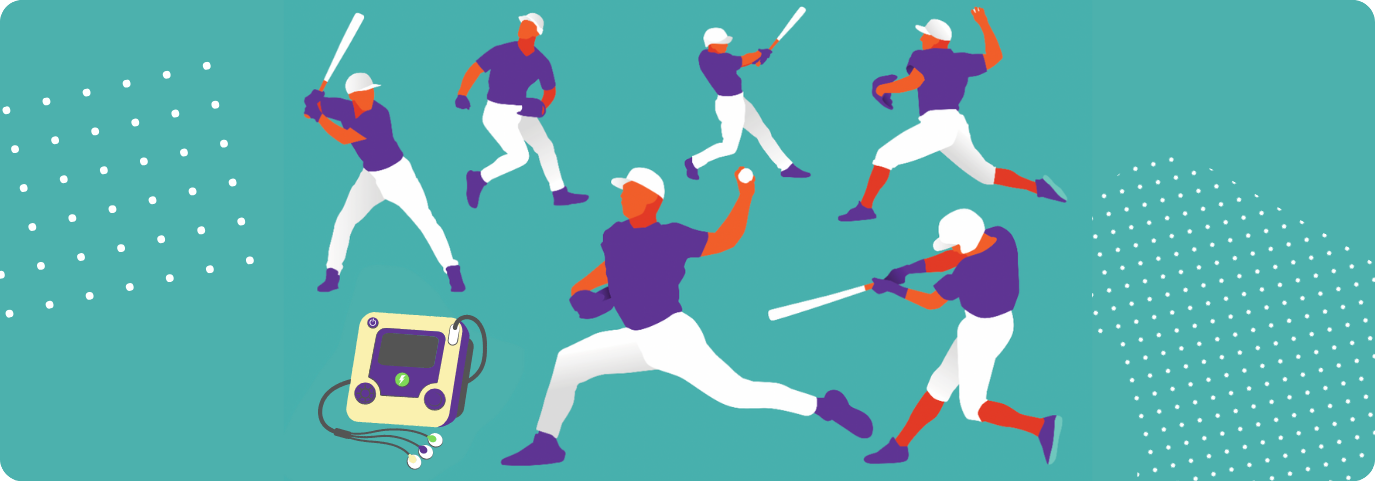
They’re easy to use, and they can save the life of an athlete in danger
If you’re the parent of a young athlete, you’ve probably noticed that sports have changed quite a bit since you were a kid. The football pads are more elaborate, the baseball helmets are more sophisticated, and even the mouthguards are more high-tech than they used to be. The old days of “rub some dirt on it, kid” are long gone.
Even the most grizzled traditionalist would admit that fewer traumatic sports injuries are a good thing. We can’t protect our kids (or ourselves, for that matter) from ever getting a skinned knee, but preventing concussions and spinal cord injuries seems like a reasonable goal.
The same goes for protecting athletes from cardiac arrest.
Prominent sports players have made headlines this year for suffering cardiac events in the heat of action. In January, Buffalo Bills safety Damar Hamlin collapsed on the field after experiencing cardiac arrest. In August, the son of NBA star LeBron James went into cardiac arrest during a USC basketball practice.
In both cases, timely responses from bystanders who knew how to use automated external defibrillators (AEDs) and perform CPR managed to save the lives of the athletes. The significance of this wasn’t lost on anyone—Hamlin has since established a foundation to promote the use of AEDs and CPR.
It’s a noble initiative and a timely one. The American Heart Association (AHA) estimates that over 356,000 incidences of cardiac arrest occur outside hospitals each year. And according to the National Institutes of Health (NIH), 9 out of 10 cases that occur outside hospitals are fatal—though prompt use of AEDs can significantly boost odds of survival.
This is why every local sports league should have AEDs at their fields, courts, rinks, or arenas. They’re an essential piece of safety equipment, and a literal lifesaver when someone experiences a cardiac event.
And, as the AHA explains, cardiac arrest can happen without warning—to anyone of any age. Almost any heart condition—whether known to the person or not—can cause cardiac arrest. So can electrical abnormalities, a sharp blow to the chest, and a long list of different (and often undetected) causes.
As the cases of Hamlin and James show, youth and exceptional physical fitness are no guarantee against cardiac events. Neither of them had been diagnosed with serious pre-existing conditions, and neither had shown indications of medical issues before they suffered cardiac arrest. By almost any definition, they would’ve been considered “low risk” for such a thing.
But obviously, “low risk” isn’t the same as “no risk.” And when loved ones’ lives are in the balance, most people would prefer to err on the side of caution.
This is why AED advocates have been vocal about the need to place the devices in public gathering places, such as sports venues. Multiple studies have shown that prompt AED use following a cardiac event drastically increases survival rates. And, most importantly, the devices can be safely used by any bystander who can reach it.
Contrary to popular belief, there’s no risk of a novice AED user accidentally inducing a heart attack in a hapless patient This is because the device only administers shocks when it detects an abnormal heart rhythm—in other words, if the patient’s heart doesn’t need a shock, then the machine won’t give one.
For parents, coaches, and administrators of local sports leagues, this makes AEDs a high reward-low risk proposition. In the worst case scenario, you’re prepared for an accident that never happens. If the unthinkable does happen, though, an AED can be the difference between a harrowing moment and a tragic event.
Both the anecdotal evidence and the research are clear: AEDs can make any sports venue a much safer place. We protect our athletes’ brains and bones by ensuring they wear helmets and protective gear when it’s gametime. We should do the same for their hearts—one little AED can make a huge difference.